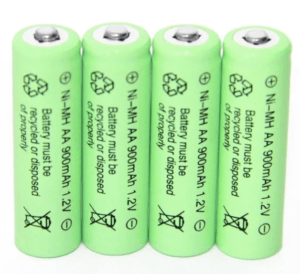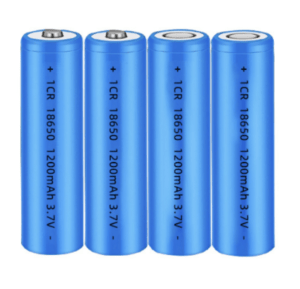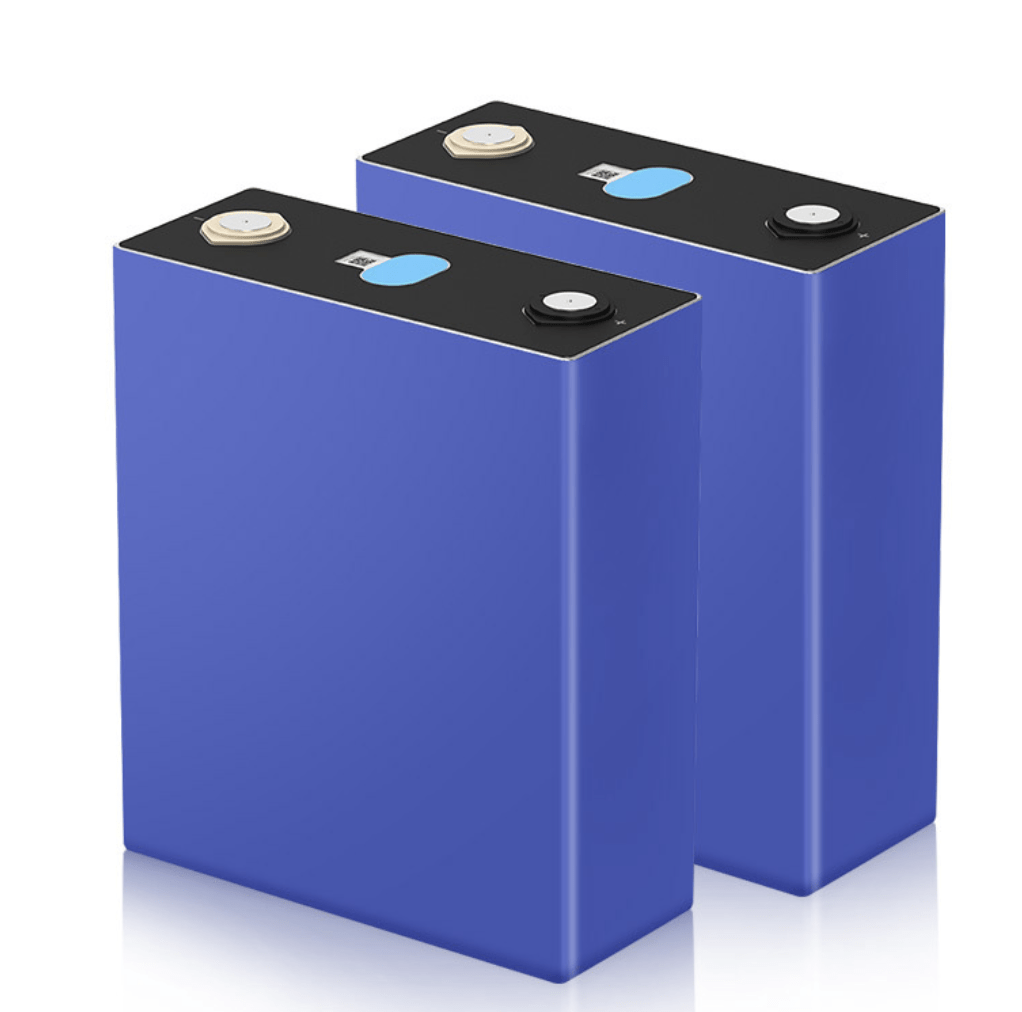By Michael Zhang || Updated on 26th Feb 2024
With the development of science and technology, batteries, as the core component of solar lights, play a vital role in the product. However, different types of batteries have differences in chemical composition, energy density, self-discharge, memory effect, etc., and these differences will affect the lifespan of the battery, this blog will be a comprehensive comparative analysis of Ni-MH batteries, ternary lithium batteries and LiFePO4 batteries to help readers better understand the different types of batteries.
Table of Contents



Add Your Heading Text Here
Chemical Composition
Battery chemistry refers to the chemicals or combination of substances that make up the battery, including components such as positive electrode materials, negative electrode materials, electrolyte, and diaphragm. These chemical components directly affect the performance, energy density, cycle life, and safety of the battery. In different types of batteries, the chemical composition may be different, so understanding the chemical composition of a battery can help us better understand its performance characteristics and scope of application.
| Battery Type | Chemical Composition |
|---|---|
| NI-MH Battery | The main chemical components of nickel-metal hydride batteries include nickel and hydrogen. Nickel is used as the positive electrode material, which has a high content, while hydrogen is used as the hydrogen storage material for the negative electrode. These chemical components play a key role in the manufacturing process of the battery, which directly affects the performance and cost of the battery. |
| Ternary Lithium Battery | The main chemical components used in ternary lithium batteries include lithium, nickel, cobalt and manganese. Among them, lithium is used as the main component of the positive electrode, while nickel, cobalt and manganese are used as auxiliary materials to regulate the performance and stability of the battery. |
| LiFePO4 Battery | The main chemical components of LiFePO4 batteries include iron and phosphorus. Compared with other types of batteries, LiFePO4 batteries use simpler components, which contain higher levels of iron and phosphorus, and have lower costs and good safety performance. |
Energy Density
The energy density of a battery refers to the amount of energy stored per unit of mass or per unit of volume. Simply put, energy density is the ratio of the amount of energy a battery can store to its mass or volume. It is usually expressed in units of Wh/kg (watt-hours per kilogram) or Wh/L (watt-hours per litre). Higher energy density means that the battery can store more energy in the same mass or volume, so a battery with higher energy density can provide longer service life or greater power output. Energy density is one of the most important indicators for evaluating the performance of a battery, and it is especially important for applications such as electric vehicles and mobile devices, which need to be used for a long period of time but have limitations on size or weight.
| Battery Type | Energy Density |
|---|---|
| NI-MH Battery | Nickel-metal hydride batteries have a lower energy density, with less energy output per unit of volume or per unit of weight relative to other types of batteries, and therefore have a mediocre performance in terms of energy storage density. |
| Ternary Lithium Battery | Lithium ternary batteries have a higher energy density and can provide higher energy output, enabling them to store more energy in the same volume or weight. |
| LiFePO4 Battery | The energy density of LiFePO4 batteries is average, between nickel-metal hydride batteries and ternary lithium batteries, although not as good as ternary lithium batteries, but relative to nickel-metal hydride batteries have improved. |
Self-discharge
Battery self-discharge is the process by which a battery releases stored charge or energy on its own due to internal chemical reactions when it is not being used or connected to an external load. Even without an external circuit connection, the chemical reactions within the battery still result in a loss of charge, which gradually reduces the battery’s capacity. Self-discharge is an important parameter of battery performance, especially for batteries that need to be stored for long periods of time. Batteries with lower self-discharge rates are able to maintain their stored charge for longer periods of time, thus extending the effective life of the battery.
| Battery Type | Self-discharge |
|---|---|
| NI-MH Battery | Nickel-metal hydride batteries have a high self-discharge, and the batteries will discharge themselves even when not in use. This means that the charge in the battery is gradually depleted even when it is not being used, thus reducing the storage time and efficiency of the battery. |
| Ternary Lithium Battery | Li-ion ternary batteries have a relatively low self-discharge, and compared to NiMH batteries, they have less charge depletion when not in use for long periods of time. This makes Li-ion ternary batteries more suitable for long-term storage and application. |
| LiFePO4 Battery | LiFePO4 batteries also have a relatively low self-discharge, and similar to lithium ternary batteries, the batteries have less charge loss even when not in use for long periods of time. |
Memory Effect
The memory effect of batteries refers to the partial loss or reduction of battery capacity during repeated charging and discharging cycles. This phenomenon usually occurs in Ni-cd batteries and Ni-MH batteries. When the battery is repeatedly partially charged and discharged, the active material in the battery may gradually be fixed in a part of the position during the repeated charging and discharging process, forming the so-called “memory points”. This results in the battery only being charged to the level above the “memory point” during subsequent recharges, resulting in a loss of battery capacity. The memory effect reduces the usable capacity of the battery, which in turn reduces the efficiency and performance of the battery.
| Battery Type | Memory Effect |
|---|---|
| NI-MH Battery | Nickel-metal hydride batteries have memory effect, i.e., during repeated charging and discharging, the battery may remember shorter charging cycles, resulting in a reduction of its actual usable capacity and a decline in performance. |
| Ternary Lithium Battery | Lithium ternary batteries are basically unaffected by the memory effect, and their charging and discharging process will not affect their actual usable capacity and maintain stable performance. |
| LiFePO4 Battery | LiFePO4 batteries are also basically unaffected by the memory effect, and similar to lithium ternary batteries, their charging and discharging processes do not lead to performance degradation. |
Number Of Cycles&Lifespan
The number of cycles of a battery refers to the number of charge/discharge cycles that a battery is capable of performing. In the charging mode, the battery will store energy; in the discharging mode, the battery will release the stored energy for use by the solar lights. A complete charge/discharge cycle is one cycle. The number of cycles is one of the most important indicators of battery life and stability. Generally speaking, the more cycles a battery has, the longer its service life and the more stable its performance. For solar lights, it usually takes 3 days to complete a cycle, and if the supplier provides brand new lithium batteries, the lifespan of the product will also be very long.
| Battery Type | Number Of Cycles | Lifespan |
|---|---|---|
| NI-MH Battery | Nickel-metal hydride batteries usually have a life span of about 500 charge/discharge cycles. As the number of cycles increases, the performance of NiMH batteries will gradually decline, and the capacity decay is more obvious. | Around 1-2 years |
| Ternary Lithium Battery | Li-ion ternary batteries usually have a longer lifespan than NiMH batteries, which can reach about 1,000 charge/discharge cycles. In contrast, Li-ion ternary batteries have better cycle life performance and can provide longer service life and stability. | Around 2-3 years |
| LiFePO4 Battery | Li-FePO4 batteries typically have a longer lifespan, up to 2,000 charge/discharge cycles. Lithium iron phosphate batteries have better cycle life and durability, and can maintain stable performance for a longer period of time. | Around 3-5 years |
Conclusion
Although LiFePo4 batteries have the longest overall lifespan, but we can not just use lithium iron phosphate batteries, because we also have to balance the brightness of the solar light, the size of the solar panels, the size of the battery box space in the head of the light, and other factors, so that we can use the most suitable batteries to make the most suitable for the market of the product, so the best is not equal to the most suitable.
As the solar light manufacturer with the most experience in solar light research and development in the industry, FLIGREEN has always been committed to providing the best quality products to the market. We not only focus on the quality and performance of our products, but also on innovation and continuous improvement of technology. If you want to know more about solar lights or are interested in our products, please feel free to contact us. We will be happy to provide you with professional answers and services, so that solar lights bring more convenience and comfort to your life and work.
Related Blogs
Share Via:
Get in Touch with Us Now!
Got questions or feedback? We’d love to hear from you! Just fill out the form below, and our friendly team will respond ASAP.
